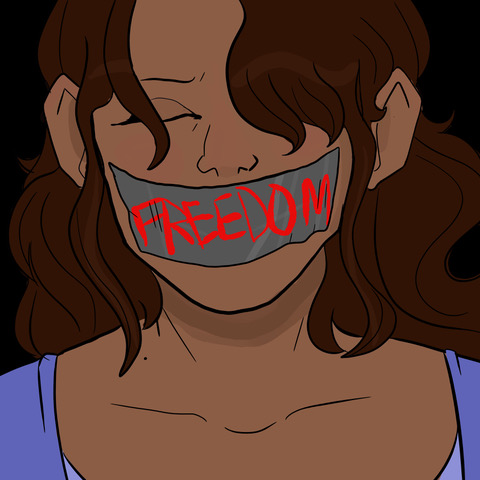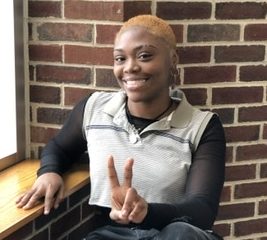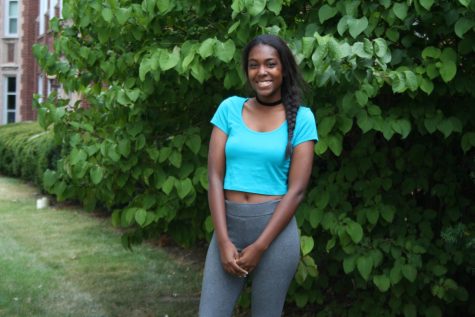Hate Speech vs Free Speech
This article discusses what the constitution and the American government legally considers free speech along with speech that violates their restrictions.

There has long been a debate about the limits of free speech.
October 1, 2018
Freedom of speech is one of the most valued attributes of America and is one of the many concepts that contribute to the idea of America being “The Land of the Free”. Hate speech and free speech are two complex concepts that have been causing a lot of controversy recently within the United States. Some people believe that the line between the two is as clear as day while others think hate speech falls under the category of free speech no matter how hurtful it is.
According to Webster’s Dictionary, free speech is “the legal right to express one’s opinions freely”. Meanwhile, hate speech is “speech expressing hatred of a particular group of people”. Those who defend the right to use hate speech often claim that putting restrictions on what you can or cannot say is a violation of your constitutional rights.
The first amendment of the Constitution of the United States of America (1787) directly states, “Congress shall make no law respecting an establishment of religion, or prohibiting the free exercise thereof; or abridging the freedom of speech, or of the press; or the right of the people peaceably to assemble, and to petition the government for a redress of grievances.”
The purpose of the first amendment has been slightly altered within society over time since it has been put into effect. Social Studies teacher, John Fields, says that this amendment was not meant for people to be able to, “say whatever they want,” but to allow them to express their opinions about the U.S. government without restraint.
“The first amendment was designed to prevent the government from prohibiting us from protesting… [and] to allow us to criticize them,” said Fields.
This incorrect conception about the constitution supporting the use of all types of expression has led to the wide use of hate speech. English teacher, Deirdre Sullivan, believes the line between hate speech and free speech is that hate speech obviously uses words to target specific groups of people.
“If speech targets… threatens… or intimidates a group of people based on race, gender, sexual orientation, disabilities [etc.] then it definitely [crosses] the line,” said Sullivan.
Legal lines have actually been drawn between the varying types of speech. The U.S. Supreme Court has proclaimed that state and federal governments can place reasonable restrictions on the time, place, and manner, or TMP, of individual expression. Thanks to these restrictions, exceptions to freedom of speech include the following: obscenity, child pornography, “fighting words”, “true threats”, offensive speech, speech owned by others, defamation, etc.
Despite the clarifications the American government has continuously established, hate speech is still a huge issue across the nation. It has been proven that it can even lead to acts of violence.
An example of this is the Neo-Nazi rally that was held in 2017 by white supremacists in Charlottesville, Virginia. Fields believes this extreme form of expressing one’s self showed how hate speech might start off as something simple but can quickly escalate into something dangerous.
“It [hate speech] can lead to acts of violence and it has led to acts of violence. [For example] the Charlottesville protest last year. There was a guy who drove a car into the crowd and killed someone. There are several examples of somebody using hate speech to incite someone else to commit violence,” said Fields.
Western Civilization and Economics teacher, Erin Cunningham, agrees with the idea of restricting some forms of speech for the sake of protecting others from potential violence.
“When people start to act on what’s being said hatefully, that’s when it [freedom of speech] is no longer protected,” said Cunningham.
According to the TMP restrictions, the limitations of free speech can fluctuate based on where a person is.
“A school has a little bit more leeway due to supreme court cases that have ruled that students have free speech as long as it doesn’t disturb the learning environment,” said Cunningham.
Talking about political views or religious beliefs might not be deemed appropriate in a school or work setting.
“People don’t understand that private institutions can limit your free speech. Your free speech ends when you take away somebody else’s freedom,” said Fields.
Private Institutions include social media platforms such as Twitter, Facebook and Instagram. Infowars, a radio show hosted by far-right conspiracy theorist Alex Jones, was recently shut down on Twitter and has been taken down by several other companies due to harassment of mass shooting victims and their families, along with the spreading of false news. Apple, Google, Facebook, and other sites that the companies own cited hate speech and offensive discourse for Infowars’ content removal.
“I do think people can abuse the first amendment … They abuse the first amendment with their hate speech. People do try to use speech to harm other people,” said Fields.




